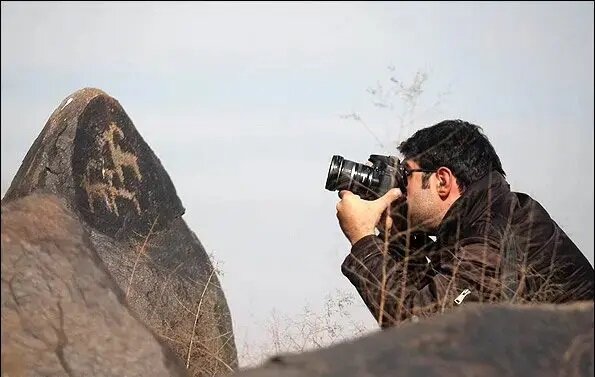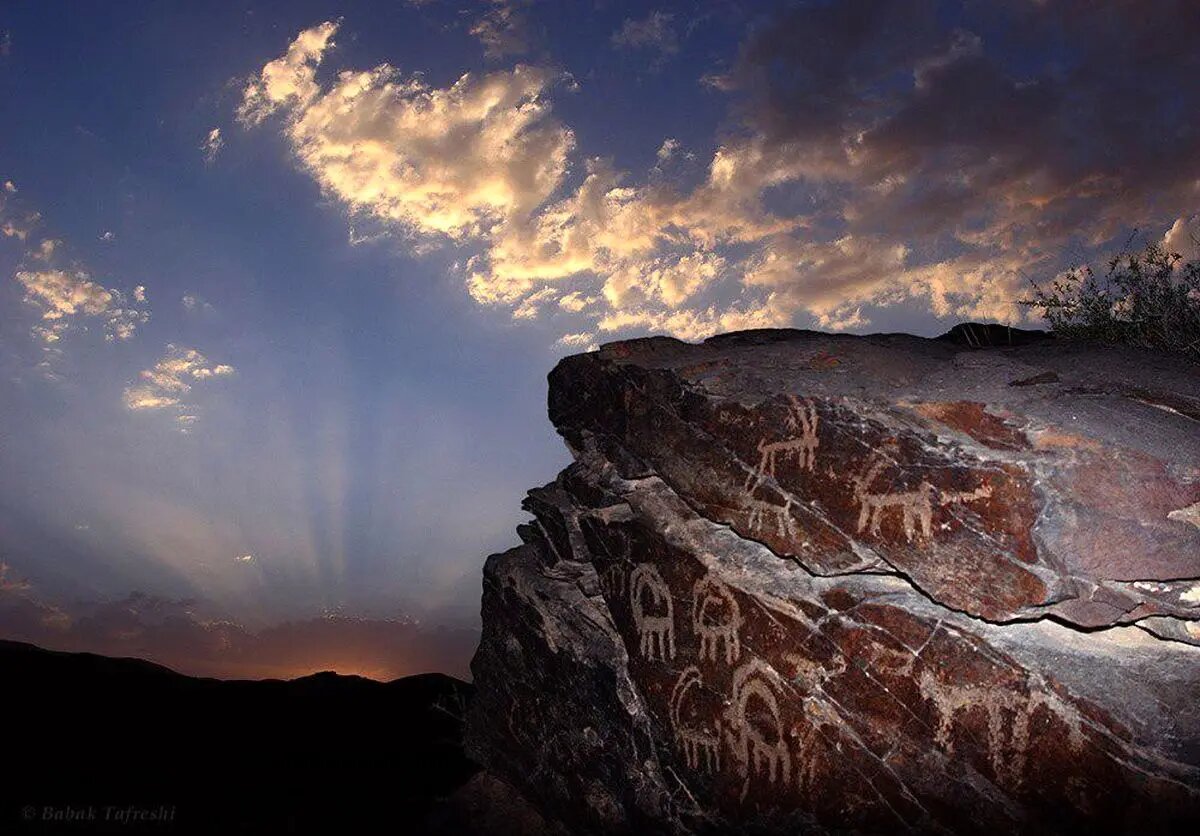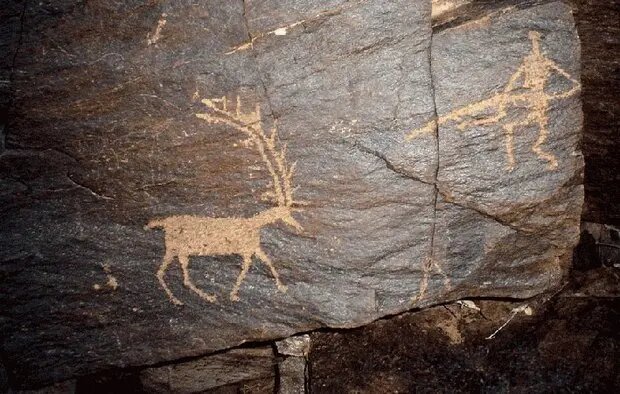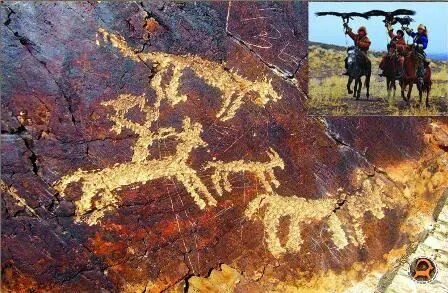Teymareh petroglyphs, world’s ‘largest’ collection of rock art, at risk of disappearing

TEHRAN - In the heart of Iran lies Teymareh, a site of immense historical significance known for its vast collection of petroglyphs that date back thousands of years.
There are approximately 21,000 ancient rock carvings in Teymareh, with some estimated to be as old as 40,000 years. However, these invaluable artifacts have been left unprotected and neglected.
Petroglyphs are among the oldest historical and artistic remnants of humanity. Tens of thousands of years ago, when humans did not have a specific language or written script, they communicated and recorded their presence and living conditions through these rock carvings.
Today, Teymareh stands as one of the largest repositories of such prehistoric art, yet it receives minimal attention from authorities and lacks adequate protective measures.
According to ILNA, the neglect of Teymareh is so severe that a national base for the protection of this cultural heritage has not been established, allowing these ancient artifacts to remain vulnerable and unguarded.
It would not be an exaggeration to call Teymareh the world’s largest open-air museum, as it hosts thousands of petroglyphs and rock canvases, the report said.

These carvings, once mistaken by locals for the whimsical drawings of shepherds, are actually symbolic representations created by early humans who lived in the region long before the advent of written language.
For years, the Teymareh petroglyphs went unnoticed and unappreciated, almost to the point of disappearing forever, had it not been for the efforts of local organizations like the Teymareh Friends Association and the community that rallied to raise awareness about this irreplaceable part of human history.
Talking to ILNA, Rasoul Majidi, the director of the Teymareh Friends Association and a leading researcher and guide on Teymareh petroglyphs, has provided insights into the current condition of this vast archaeological site.
“Teymareh was completely unknown until a few decades ago,” Majidi explained. It was only in the early 1990s that Dr. Morteza Farhadi introduced Teymareh to Iranians and the world through his book, titled Museums in the Wind.
Following this publication, more scholars began writing books and articles about Teymareh, slowly bringing its petroglyphs to light. However, Teymareh still hasn’t received the recognition it truly deserves.”
In 2005, four Italian tourists and researchers who had read Farhadi’s book visited the area. They were unaware of where to find the petroglyphs until Majidi, acting as their guide, showed them the extensive rock carvings. The visitors were astounded by the sheer number of petroglyphs and, upon returning, urged the preservation of the site, emphasizing the priceless value of these artifacts.

“Until then, we were unaware of Teymareh’s significance and value,” Majidi admitted. “It was the comments from these Italian researchers that changed the course of our lives and inspired us to delve into historical studies and tourism training.”
Initially, the locals were skeptical of Majidi’s efforts to preserve the site. Many ridiculed the association’s work, dismissing the petroglyphs as mere shepherd drawings or, worse, accusing the association of having drawn them themselves. However, after extensive studies and global comparisons, the community realized the petroglyphs were part of a worldwide phenomenon, one that other nations protect zealously and capitalize on for tourism.
Elsewhere in his remarks, Majidi recounted how the efforts to attract tourists and archaeologists to Teymareh gradually shifted public perception, but this progress met with a new obstacle: mining activities. These activities threaten the integrity of Teymareh’s petroglyphs.
There are approximately 21,000 ancient rock carvings in Teymareh, with some estimated to be as old as 40,000 years. However, these invaluable artifacts have been left unprotected and neglected.“The world’s largest open-air museum is now at the mercy of miners,” Majidi lamented. “Five major mining operations extracting silica for the glass and steel industries are active in the area. These mining activities posed a severe threat to this ancient collection until our persistent advocacy managed to halt three of the operations. However, two mines are still operational.”
Moreover, Majidi highlighted that all conservation efforts for Teymareh’s petroglyphs have been spearheaded by non-governmental organizations and the local community. Despite these efforts, the national heritage authorities have only managed to register three regions in Teymareh as national heritage sites, with no substantial protective measures implemented.
“Although some officials have shown interest in Teymareh at various times, changes in administration have led to the abandonment of any sustained conservation plans,” Majidi pointed out. “It is disheartening to see that no lasting programs were established.”
Majidi acknowledged the significant change in local attitudes towards Teymareh, emphasizing the growing protective sentiment among the community.
“In recent years, we have made significant efforts to raise awareness among locals about the importance of Teymareh’s petroglyphs, cultivating a protective mindset within the community,” Majidi said. “With this social capital, if mining activities are halted and appropriate infrastructure is developed, we can transform the region into a thriving tourist destination.”
He further highlighted the contrasting situation in Saudi Arabia, where the government has invested heavily in safeguarding and promoting their 400 rock canvases. "Meanwhile, Iran, with its thousands of rock canvases, lacks any strategic plan for their protection and introduction to the world," Majidi noted with concern.

Urgency for a national preservation base
Majidi stressed the need for a national base dedicated to Teymareh’s preservation. Despite the influx of archaeologists who recognize the area’s potential, tangible conservation efforts remain lacking.
"We have not seen any foreign tourists in three years. While archaeologists who visit Teymareh acknowledge its uniqueness and potential, these insights remain merely observational and do not translate into action.”
Situated at the intersection of the headwaters of the Anarbar River, between the cities of Mahallat, Khomein, and Golpayegan, Teymareh is shared by the provinces of Markazi, Lorestan, and Isfahan.
Teymareh carvings range from abstract to realistic, and they include depictions of animals and plants. Animal figures are predominant, especially goats with large, pointed horns. Other animals depicted include feliforms, canids, horses, dromedaries, owls, fish, tigers, cows, and birds such as storks, hoopoes, and partridges. Plant figures include cedar, pine, and wheat. There are also images of martial arts, magic dances, pregnant women, camel caravans, and people with large hands.
AM
